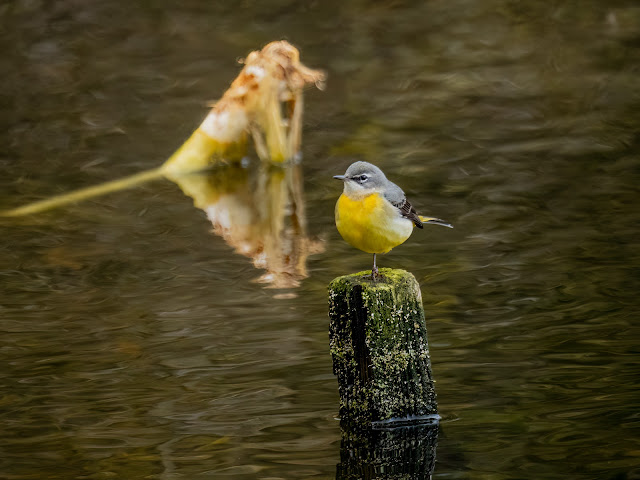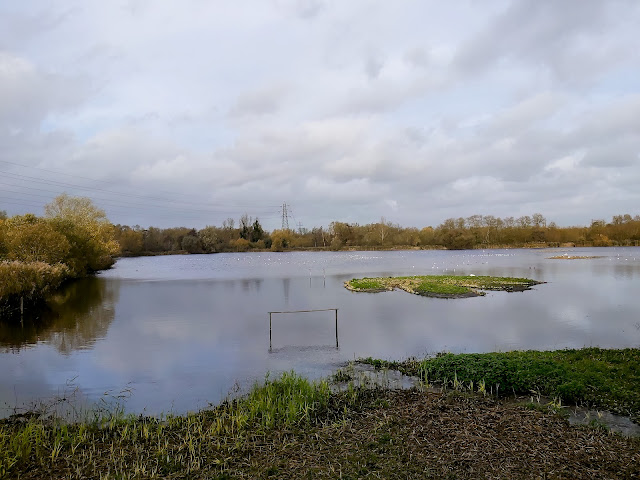On 27th October 2022, I visited RSPB Rye Meads in Hertfordshire …. see here.
It is a site that is relatively easy for me to visit by public transport: bus to Billericay, train to London Liverpool Street followed by another train to Rye House and then a short walk to the reserve entrance.
An Abellio Greater Anglia ticket sale which offered me a day return from Billericay to Rye House for a mere £10 prompted my previous visit and another today.
Whilst waiting for the train at Billericay station, I saw 3 fly-over Ring-necked Parakeets, all noisily calling.
Rye Meads is a 58.5 hectare biological Site of Special Scientific Interest (SSSI) located in Rye House near Hoddesdon in Hertfordshire. It is one of series of wetlands and reservoirs situated along the River Lea to the north east of London. It is part of the Lea Valley RAMSAR site (a group of internationally important wetland sites) and a Special Protection Area (SPA).
Rye Meads is divided into several areas. North of Rye Road is the Rye Meads nature reserve: the western half of this nature reserve, next to the River Lea in the Lee Valley Regional Park, is managed by the RSPB and the eastern half is managed by the Hertfordshire and Middlesex Wildlife Trust. It also includes a meadow and lagoons owned by Thames Water south of Rye Road which is not open to the public.
I visited the RSPB Rye Meads reserve which includes a visitor centre, trails and a number of hides. The seasonal flooding of a large ancient flood meadow combined with the rich soils has resulted in a mosaic of habitats, consisting of reedbeds, marshy grasslands and fen vegetation plus a number of small lakes and a scrape.
As I arrived at the reserve entrance, I heard a calling Chiffchaff and then eventually saw the bird as it flew from one bush to another.
My trip to RSPB Rye Meads on 27th October 2022 was very successful and produced sightings of a Water Pipit, a single Kingfisher and at least 5 Green Sandpipers.
Unfortunately, during today’s visit I failed to see any of these species and generally there were less birds to be seen.
However, there were a few highlights, most notably a juvenile Whooper Swan, a very unusual record away from the traditional wintering grounds. I did manage to get some very distant and therefore heavily cropped photos of this bird.
Much easier was a very photogenic Grey Wagtail which perched obligingly just outside the Kingfisher hide.
Other notable records during my visit across the reserve included the following: Shoveler (c.50), Gadwall (c.10), Teal (c.10), Tufted Duck (8), Mallard (c.20), Mute Swan (c.20), Little Grebe (4), Water Rail (1 heard calling), Coot (c.50), Moorhen (c.10), Grey Heron (1), Lapwing (c.150), Cormorant (3), Black-headed Gull (c.150), Lesser Black-backed Gull (1), Cetti’s Warbler (1 singing male), Redwing (c.20), Kestrel (1), Stock Dove (3), Grey Squirrel (1)
Here are some other photos from my visit ….
Photo: juvenile Whooper Swan
Photo: Grey Wagtail
Photo: Little Grebe
#DefendNature .... Please help save and enhance our laws that protect our environment and wildlife
💚🦆 🦉🦋🐝🦊🦡🌼 🌳💚
Stay safe, stay well, stay strong, stay connected with nature








No comments:
Post a Comment
If you feel like commenting on my blog, you can contact me by completing the comment form below. I will respond to all comments and enquiries and constructive criticism will always be welcomed.